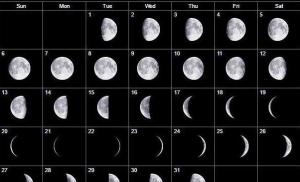Tsvetaeva 21 night Monday. "Twenty-one
“Twenty-one. Night. Monday..." Anna Akhmatova
Twenty-one. Night. Monday.
The outlines of the capital in the darkness.
Composed by some slacker,
What love happens on earth.And out of laziness or boredom
Everyone believed, and so they live:
Looking forward to dates, afraid of separation
And they sing love songs.But to others the secret is revealed,
And silence will rest on them...
I came across this by accident
And since then everything seems to be sick.
Analysis of Akhmatova’s poem “The Twenty-First. Night. Monday…"
In 1917, Akhmatova’s third collection, “The White Flock,” was released, considered the most significant of her pre-revolutionary books. Contemporary critics practically ignored the publication. The fact is that it came out during a difficult period for Russia. According to Anna Andreevna’s later memoirs, the first printed edition could not get from St. Petersburg to Moscow. Nevertheless, the book still received a certain number of reviews. Most critics noted the stylistic difference between “The White Flock” and “Evening” (1912) and “The Rosary” (1914). Slonimsky believed that the poems included in Akhmatova’s third collection were marked by a new, in-depth worldview, determined by the victory of the spiritual over the sensual, to the extreme, feminine. According to Mochulsky, in “The White Flock” the poetess becomes stronger, stricter, and more severe. In her work the image of the Motherland appears and the echo of war is heard. Perhaps, main feature the collection is polyphony, which many researchers of Akhmatova’s lyrics have written about.
A short poem “Twenty-one. Night. Monday…”, dated 1917, is included in the collection “The White Flock”. His example clearly shows what changes the motif of love has undergone in Anna Andreevna’s poetry. The first quatrain begins with parcellation - a speech device that is an intonational division of a statement into segments, which are graphically designated as independent sentences. The use of this trope allows Akhmatova to achieve greater emotionality, expressiveness, and brightness. It seems that the opening line of the poem is an excerpt from a telegram. Everything is brief, everything is to the point - just a time indication, nothing superfluous, no details.
At first, it seems that the lyrical heroine of the poem treats love with obvious irony. According to her, the existence of this feeling on earth was invented by some slacker. The rest of the people believed him, either out of laziness or boredom. In “The White Flock,” the lyrical heroine no longer treats love with such trepidation. The excitement generated by the first feeling disappeared. The girl who clasped her hands under a dark veil, put the glove on her left hand on her right hand, ran after her endlessly adored man to the gate, and promised to die if he left, was gone. The love dramas she experienced changed her forever, made her calmer and wiser. However, one should not think that she gave up the most beautiful feeling on earth. Rather, the lyrical heroine completely rethought him. She perceives love as a secret, accessible only to selected people. Comprehension of the truth brings them peace (“silence rests upon them”). The heroine of the poem was accidentally lucky enough to fall into the circle of those “others.” Love as a disease, love as a mystery - this is the new perception that is revealed to readers in Akhmatova’s third collection.
The book “The White Flock” was influenced not only by the tragic events that took place in Russia, but also by Anna Andreevna’s relationship with the Russian muralist and writer Boris Anrep, who spent most of his life in Great Britain. The poetess met him in 1914. Before Anrep left Russian Empire The lovers saw each other often. Akhmatova dedicated about thirty poems to Boris Vasilyevich, a significant part of them were included in the collection “The White Flock”. Anna Andreevna's last meeting with Anrep took place in 1965, in Paris, after honoring the poetess in Oxford. Boris Vasilyevich later recalled that the image of the once beloved woman seemed to him as young, fresh and charming as in 1917.
Who took the Tatar pseudonym Akhmatova. “Twenty-one. Night. Monday...": analysis of this short early poem we will carry out in the article.
Briefly about the biography
Noblewoman Anna Andreevna was the third child in big family. Her three sisters died of tuberculosis in their youth, her older brother committed suicide, and the youngest died in exile 10 years after Anna’s death. That is, her loved ones and relatives were not with her during the difficult moments of her life.
A. Gorenko was born in Odessa in 1889, and spent her childhood in Tsarskoe Selo, where she studied at the Mariinsky Gymnasium. In the summer the family went to Crimea.
The girl learned French, listening to the conversations of the tutors with their older sister and brother. She began writing poetry at the age of 11. By 1905, an aspiring poet, the handsome N. Gumilyov, fell in love with her and published her poem in Paris. In 1910, they connected their lives, and Anna Andreevna took the pseudonym Akhmatova - the surname of her great-grandmother. Two years later, their son Lev was born.

After six years, relations between the poets became tense, and in 1918 they divorced. It is no coincidence that the 3rd collection of poems entitled “The White Flock” was published in 1917. It included the work “Twenty-one. Night. Monday…”, the analysis of which will be below. For now, let's say that it sounds like disappointment in love.
Life after the bloody revolution
In the same 1918, at the age of 29, Anna Andreevna quickly married Vladimir Shileiko and after three years broke up with him. At this time, N. Gumilyov was arrested and almost a month later shot. At the age of 33, Anna Andreevna united her life with art critic N. Punin. During this period, her poems ceased to be published. When my son was 26 years old, he was arrested for five years. The poetess breaks up with N. Punin and will be able to see her son for a short time only in 1943. In 1944, he joined the army and took part in the capture of Berlin. However, in 1949, N. Punin and his son were arrested. Lev was sentenced to 10 years in the camps. The mother knocked on all the doorsteps, stood in lines with parcels, wrote poems singing the glory of Stalin, but they did not let her son out. The 20th Congress of the CPSU brought him freedom.
In 1964, the poetess was awarded a prize in Italy.
In 1965, she traveled to Britain: she received an honorary diploma from the University of Oxford.
And in 1966, at the 77th year of her life, Anna Andreevna died. Could the poetess have imagined such a bitter fate for herself when, at the age of 28, the lines “Twenty-one. Night. Monday..."? An analysis of the work will be given below. Unfulfilled love occupied her thoughts at that moment.
Briefly about the “White Flock” in the works of A. Akhmatova
One might ask: why does the poetess’s third collection have such a strange title? White is innocent, pure, and also the color of the Holy Spirit, who descended to the sinful earth in the form of a dove. This color is also a symbol of death.

The image of birds is freedom, hence the flock that has left the ground and looks at everything with detachment. Pure freedom and death of feelings is the theme of the work “Twenty-one. Night. Monday…". An analysis of the poem shows how the lyrical heroine separated from the “pack” in order to indulge in specific reflection at night alone: is love necessary? A poem without a title. This suggests that the poet fears that the title may be considered a separate text and provide additional meaning that is not required by the author.
“Twenty-one. Night. Monday…". Analysis of the poem

The work begins with short, one-line, complete sentences. And one gets the impression that the lyrical heroine is separated from everyone and everything: “Twenty-one. Night. Monday". Analysis of the last two lines of the first stanza shows a nightly conversation in silence with herself, full of confidence that there is no love on earth. It was just written by some slacker. Business people do not experience feelings, according to the lyrical heroine.
The second stanza is no less contemptuous. Everyone believed the slacker only out of laziness and boredom. Instead of being busy, people are full of dreams and hopes for meetings, and suffer from separation.
The last quatrain is dedicated to chosen people, those to whom the secret has been revealed, and therefore nothing disturbs them. At the age of 28, to accidentally stumble upon such a discovery, when you still have your whole life ahead of you, is very bitter. That’s why the lyrical heroine says that she seemed to be sick. For her, unhappy and lonely, it is just as difficult as for a young girl experiencing her first dramatic love.
This collection is largely inspired by meetings with her lover Boris Anrep, whom A. Akhmatova met in 1914 and met often. But fate separated them: Anrep spent his entire life in exile. They met only when Anna Andreevna came to England in 1965. In his opinion, even at that age she was majestic and beautiful.
Concluding the analysis of Akhmatova’s poem “The Twenty-First. Night. Monday…”, it should be added, it is written in anapest.
Poem “Twenty-one. Night. Monday” is considered one of the most important for understanding the early period of Akhmatova’s work. Brief analysis of “Twenty-one. Night. Monday,” according to the plan, can be used in literature classes in the 9th grade so that schoolchildren can understand this issue.
Brief Analysis
History of creation- the work was written in 1917, which was turbulent for Akhmatova both personally and socially.
Theme of the poem- disappointment in love.
Composition– linear, from the first stanza to the third the thought develops sequentially.
Genre- lyric poem.
Poetic size- trimeter anapaest.
Epithet – “love songs”.
Metaphor – “and silence will fall upon them“.
History of creation
1917 was a very difficult year for Akhmatova. Not only because of the revolution that shook all of Russia, but also for personal reasons: the discord with her husband became more and more obvious and deeper. In addition, the poetess begins to doubt that she is truly talented - and this despite the fact that the collections of her poems were very well received by both critics and the public. The history of the creation of the work is associated with strong experiences, especially of a personal nature.
Akhmatova had a presentiment that her marriage was not just cracking - it was falling apart. She was disappointed in herself for allowing her feelings for Nikolai Gumilyov to completely take over her heart, which ended up being broken. She was truly disappointed in the relationship and treated love without the same trepidation.
The poem was first published in the same year in the landmark collection “The White Flock” for Anna Andreevna, where she appears in a new poetic form.
Subject
The theme of the work is quite simple. It is dedicated to disappointment in love - this wonderful feeling that the lyrical heroine experienced in full, and at the same time it ultimately made her unhappy. That is why she speaks about love with such irony, renounces it, believes that its very existence is a fairy tale composed by some slacker.
At the same time, the reader is left with the feeling that behind all the cold phrases, said as if in the hearts, there actually lies sadness over a lost feeling and a desire to love and, of course, to be loved in return.
Composition
The linearly developing composition of the verse allows the reader to penetrate into the spiritual world of the lyrical heroine. In the first stanza, she seems to outline the time of action, showing how deep her thoughtfulness is. It seems that the woman is simply talking to herself, convincing herself that love doesn’t really exist. It is not difficult to imagine such a picture.
The second stanza is also full of disappointment - after all, everyone believes in the fiction of love and lives with it, worrying about a non-existent and insignificant feeling.
In the third stanza, the main idea is revealed - that for the lyrical heroine herself, the lost illusion took away the joy of life, took away the opportunity to simply live. At the same time, she says that an epiphany similar to the one that visited her is not available to everyone. And it becomes clear that the girl herself would gladly refuse him.
Genre
This is a lyrical poem in which Akhmatova describes her own feelings, putting bitter words into the mouth of the lyrical heroine. She is still so young, but she has become disillusioned with the most important feeling for every woman, and this leads her to despair.
The three-foot anapaest, used to give poetic lines the form of reflection, is most often used specifically to create lyrical works.
Means of expression
Akhmatova made this poem deliberately simple, essentially using only two figurative and expressive means: epithet– “love songs” and metaphor- “and silence will rest upon them.” It is interesting that such stinginess does not make the work less lyrical - moreover, it is precisely it that helps to emphasize the confused state of mind of a disappointed woman. She has no time for lofty phrases.
At the same time, the epithet “love songs” plays a very important role - it shows how ironic the worldview of the lyrical heroine is, who used to write such songs with pleasure.
Twenty-one. Night. Monday.
The outlines of the capital in the darkness.
Composed by some slacker,
What love happens on earth.
And out of laziness or boredom
Everyone believed, and so they live:
Looking forward to dates, afraid of separation
And they sing love songs.
But to others the secret is revealed,
And silence will rest on them...
I came across this by accident
And since then everything seems to be sick.
Analysis of the poem “Twenty-one. Night. Monday." Akhmatova
In the conditions of the pre-revolutionary crisis, Akhmatova’s creativity becomes more serious. Pure sublime feelings are replaced by motives of melancholy and disappointment. This was due not only to the situation in the country, but also to the personal life of the poetess. She was unhappy in her marriage to N. Gumilev. In 1918 they finally separated. Already in 1914, Akhmatova met B. Anrep. Loyalty to family duty did not allow the poetess to begin a love relationship, but she often met with the person she liked. In 1917, she published another collection of poems, “The White Flock,” many of the works were dedicated to Anrep. The collection also included the poem “Twenty-first. Night. Monday".
The beginning of the work is not typical for Akhmatova. Laconic one-part sentences immediately create the feeling of a diary entry or an official message. Thus, the poetess emphasizes the suddenness and importance of the thought that came to her. Akhmatova comes to the conclusion that love is just an invention of “some slacker.” This conviction shows the heroine’s deep disappointment in love, which came as a result of personal experience.
Developing her idea, Akhmatova claims that people believed this fiction and continue to live in deception. She speaks contemptuously about love affairs, dates and, in general, everything that accompanies love relationships. The poetess believes that people act this way “out of laziness or boredom.” In fact, there is no love in the world. Recognizing its existence, people try to somehow diversify their lives.
But the last stanza of the poem makes us wonder what Akhmatova meant. The “discovery of the secret” by the poetess can be considered the final verdict of love, negating its significance. On the other hand, this can be regarded as the knowledge of true love, different from that which exists in ordinary consciousness. Perhaps B. Anrep became the reason for such insight for Akhmatova. Accustomed to ordinary “human” love, she was amazed that she met a person who aroused in her a completely new great feeling. This feeling cannot even be expressed in words (“silence will rest upon them”).
In any case, the “discovery of the secret” produced a revolution in the soul of the poetess. From this significant event she feels that she still “feels like she’s sick.”
Akhmatova wrote her work “Twenty-first. Night. Monday” in 1917, when the situation in Russia was quite tense. The poetess's personal life was not successful and some doubts arose about her creative skills.
The theme of the poem is laconic and simple. It carries with it complete disappointment in the existence of love and a rethinking of some values. Akhmatova speaks ironically about this feeling, which brought her pain and suffering.
The first quatrain begins with an exact statement of the date, time and day of the week. It’s all framed in a jagged rhythm, making it seem like you’re reading a telegram. But then comes a line full of peace, reflecting what the poetess sees when she approaches the window. And you get the feeling that you are becoming an involuntary listener to someone else’s letter.
The second quatrain is permeated with annoyance that everyone believed the one who invented love. So they live with meaningless faith in this stupid fairy tale.
The final part of the poem contains the author's main idea. The poetess accidentally learned that there is no love, she is now forced to suffer and this does not allow her to live in peace.
The feeling of lyrical reflection is created by writing the text in the size of a three-foot anapest, the rhythm of which is capable of creating a similar feeling.
Akhmatova writes this work deliberately simple, using only a couple of expressive means. The epithet “love songs” and the high-flown metaphor “silence rests on them.” Such simplicity emphasizes the spiritual indifference of the suffering heroine.
The experienced love drama changes the main character. It is becoming like wise woman calm about feelings. No, she did not lose faith in the sincerity of love, she simply managed to rethink her attitude towards it, which acquired a more earthly understanding.
There is one line of reasoning in the poem. Harmony between form and content appears due to logically constructed sentences.
All the images introduced into the narrative are very simple in essence. This is the whole peculiarity of Akhmatova’s poetic style, which can fill any image with meaning and an emotional component.
Analysis 2
In 1917 The 3rd volume of the poetess entitled “The White Flock” was released, which is the most significant of all the works she wrote.
This poem is quite short, and it is included in the volume “The White Flock”. Where the changes the poetess has undergone are well reflected. Starts with speech pattern- parcellations, showing the intonational division of the expressed thought into small parts, and sound like independent phrases. This technique helps the poetess achieve significant colors, clarity, and precision. There is a feeling that the first lines of the work are a fragment of a message. Clearly, concisely - as soon as the time is given.
At first it seems that Akhmatova treats feelings with a certain note of irony. According to her, the very fact of the phenomenon of love on earth was invented by a certain lazy person who had nothing to do. Other people trusted him, maybe out of laziness, maybe because they had nothing to do. In the published volume, Akhmatova no longer has any trepidation about falling in love. She disappeared with the appearance of these first feelings. There is no woman who cowered under her dark veil, wore the glove of her left hand on her right hand, and rushed after her beloved young man to the gate, swearing to commit suicide if he disappeared from her life.
Having experienced their dramas of love, they change it for centuries, making it calmer and wiser. But one should not assume that the girl has renounced the most wonderful sensations on earth. It is better to assume that she simply rethought everything and realized it. She perceives love as a kind of secret, accessible only to some people. And recognizing it brings them peace. It was only by chance that the girl managed to be among the chosen ones with this poem. Love, this kind of illness, some kind of mystery - these are these new sensations that are revealed to those who read the third collection of the poetess.
Option 3
The poem is one of the components of the author’s poetry collection entitled “The White Flock” and is distinguished by its autobiography associated with the poetess’s personal experiences.
The main theme of the lyrical work is the author's reflections on love disappointments, leading to a rethinking of human values.
Structural composition is a linear form in which mental development storyline is carried out consistently, allowing you to understand and penetrate the spiritual world of the lyrical heroine. The first stanza shows the thoughtful depth of a woman’s state, creating a feeling of mental dialogue with herself, in the second stanza the notes of disappointment caused by a feeling of love intensify, and the third stanza is devoted to revealing the main motive of the poem, which consists in the loss of life’s illusions, which deprived the lyrical heroine of the joy of life and hope for happy future.
The poetess chooses a three-foot anapest as the poetic meter of the work, expressing the author's intention in the form of mental reflections through a peculiar sound rhythm.
Among the few means of artistic expression used in the poem, figurative epithets and metaphors stand out, which, despite their sparing use, emphasize the mental suffering of the lyrical heroine in the form of confusion and disappointment, demonstrating the uselessness of pompous phrases and words. At the same time, the author deliberately chooses a simple presentation of the chosen topic in order to describe the spiritual indifference of a suffering and disappointed woman.
A distinctive feature of the poem is the use of a peculiar turn of phrase in the form of parcellations, which consist in the intonation division of the poetic content into small passages that sound as independent expressions that create the impression of a sent fragment of a letter, stated in a clear and concise form.
Analysis of poem Twenty-one. Night. Monday as planned
You might be interested
- Analysis of the poem Solitude by Akhmatova
The work belongs to the sonnet genre of the poetess and considers the image of high art in the form of a high tower, raised by a creative person who has found his own solitude, above the bustle of life.
- Analysis of Tolstoy's poem Transparent clouds, calm movement...
This poem not only shows autumn nature very beautifully, but also conveys the feeling of this state... There are a lot of not only colors, but also sensations, sounds and, of course, poetic images. P
- Analysis of the poem In the village of Nekrasov
For almost every person, existence is a series of joys and difficulties, achievements and trials, worries that fill different days. If you look at this picture in total
- Analysis of the poem Sad Akhmatova
The work is one of the components of the poetry collection “Evening”, presented by the poetess as her debut.
- Analysis of the poem Farewell Unwashed Russia by Lermontov
This famous poem dates back to 1841. It is included in the collection of poems and essays by M.Yu. Lermontov, but historians and cultural experts are still arguing and cannot be completely sure that the author of this work is Mikhail Yuryevich.













